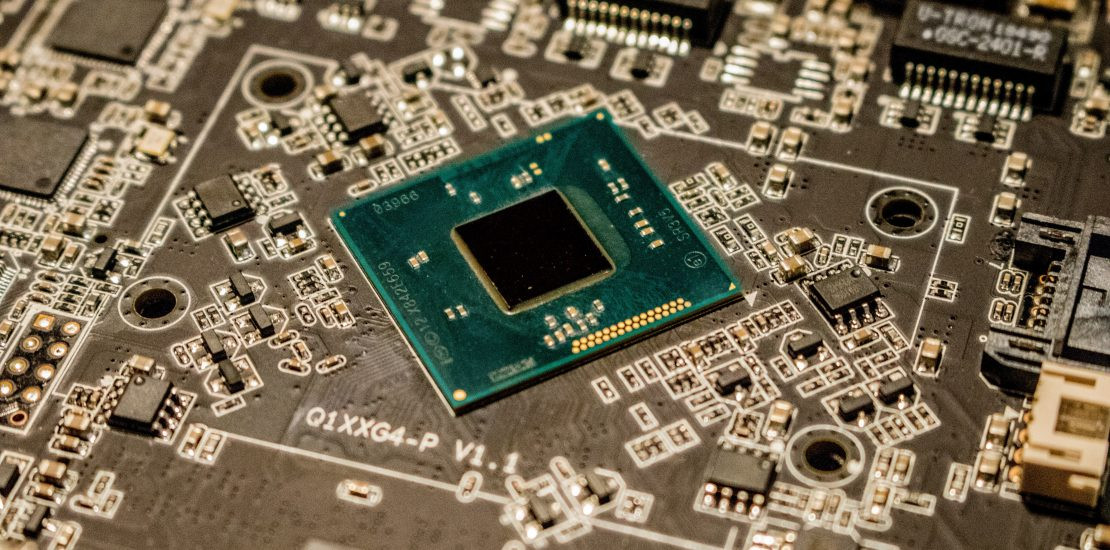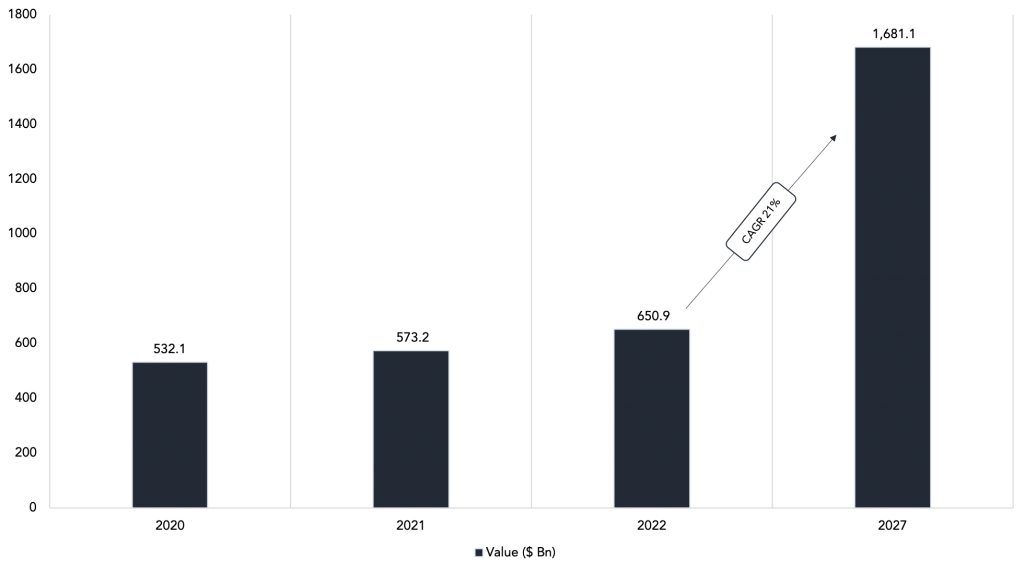An Overview
Semiconductors power every industry that is even remotely related to technology today. They enable technologies that reach the common consumers and businesses to make their functioning smarter, faster, and more efficient. It is not an exaggeration to state that the industry has many applications and enjoys remarkably high demand across industries. Communications, Consumer Electronics, Healthcare and Medical Devices, Computing and storage, Automotive, Industrial, and Aerospace and Defense are a few industries that use semiconductors extensively.
Growing usage and development of AI, IoT, and 5G, along with increasing demand for speed and efficiency, lower power consumption, consumer electronics and smart devices, make the semiconductor industry a centre of innovations. With constant innovations and the futuristic outlook of its major players, the industry is growing faster than ever.
The global semiconductor industry is estimated to grow at a CAGR of 21% from 2022 to 2027 and is expected to be more than US$1.6 trillion by 2027.
The COVID-19 pandemic hit the industry with massive chip shortages worldwide, affecting revenues. However, the industry has shown tremendous resilience and agile recovery from the loss. With many opportunities, futuristic visions and ever-increasing demand, this industry offers great advantages to the players who act strategically and promptly.
Semiconductors Industry: Pre-Pandemic vs Post-Pandemic
The semiconductor industry comprises companies designing and fabricating semiconductors and devices, such as transistors and integrated circuits. There is a fundamental trend that this industry follows, which is called Moore’s law. It means the circuit should be constantly updated to double the number of transistors that fit on it every two years. This trend has made possible the creation of smaller and smarter devices across industries.
In the early 2000s, the profit margins were low in the industry, and most companies made returns below their cost of capital. In the past decade, however, the profitability improved, driven by increasing demand for microchips in most industries. The use of technology in everything technology and cloud-based solutions started growing rapidly. This digitisation of the industries was the major factor driving growth.
The year 2019 has brought a global pandemic that disrupted the entire industry. IBM pointed out that the sudden – remote work induced – increase in consumer electronics and computing product sales worked as a double whammy in combination with a slowdown in chip production. However, COVID-19 was not the only factor behind the shortage, and the tense relationship between the US and China or China and Taiwan also played a part.
The chip shortage hit all industries, from consumer electronics to automotive. OEMs and manufacturers struggled to deal with increasing demand and shortage of products. The industry, however, jumped back on its feet quickly. The companies boosted their production capacities to address high demands. Moreover, the chip makers resorted to consolidation to gain the benefits of scale. It also led governments worldwide to consider investing in local semiconductor manufacturing to prevent such catastrophic shortages. Although analysts predict that the chip shortage is to prevail until the end of 2023, the demand for semiconductors will keep on growing with the digitisation of economies, increasing demand for smart products, rising demand for connected cars, remote work, online shopping, increasing demand for consumer electronics, smart home appliances, and the increased importance of advanced technologies in healthcare, etc. boosting the growth of semiconductor industry. As long as the digital world keeps evolving, the semiconductor industry will keep innovating and growing.
Key Applications of Semiconductor
Semiconductors play a critical role across various end markets. The absence of a single chip for any device could cost thousands of dollars to the manufacturer. Though the world is experiencing chip shortage for the short term, they will be even more important across all industries, driven by increasing semiconductor content in everything from automotive to appliances to factories, in addition to the usual computing and mobile devices. Key end-market applications of semiconductors are:
- Computing, Mobile, and Storage Devices:
It is the most common and traditional application of semiconductor chips and components. The demand is further fueled by higher demand for servers and data storage to manage huge amounts of data generated using emerging technologies, including AI/ML and cloud computing. Advancements in wireless technologies like 5G networks will also account for the market expansion.
- Automotive:
This is one of the highest-growing applications of semiconductors globally. The evolution of connected and autonomous cars could drive the demand for semiconductor components in the coming years. Most OEMs have been experiencing higher demand for advanced cars and electric vehicles while facing issues regarding semiconductor supplies. It would result in a huge demand-supply gap, so automotive OEMs can follow the localisation approach and plan for in-house manufacturing of required semiconductor technologies.
- Communications:
In today’s connected world, wired and wireless communication is essential for enterprises, governments, and individuals. Wireless communication is mainly driven by smartphones, especially those with 5G capabilities. Post-pandemic, there is a higher demand for unified communications, which integrate voice, video, and messaging into one platform. Semiconductors are integral to such technologies, from network connectivity to routers, phones, connected devices, and even the sensors used for data transmission. The needs of these segments will shape the expectations of semiconductor manufacturers and drive demand for innovations in the coming years.
- Manufacturing and Industrial:
The manufacturing industry is one of the early adopters of connected technologies and Industry 4.0. Manufacturers have invested huge amounts in automation and R&D for higher productivity and efficiency. They are also aiming to lower their production costs with higher-quality output. Semiconductor plays a very important role in developing Industry 4.0, as connected machines are equipped with higher configurations of semiconductor components. So, the demand for semiconductors in the manufacturing sector is growing rapidly.
- Consumer Electronics:
Consumer electronics are fueling the growth of the semiconductor industry. Increasing demand for smart and connected devices, such as wearables, smart appliances, tablets, etc., drives the worldwide need for semiconductor chips and components. Gaming consoles are among the highest-growing consumer electronics segments, requiring advanced semiconductors to improve the gaming experience.
Our Perspective and Recommendations
While they are the smallest components of devices, semiconductors nowadays play a more crucial role in everyone’s lives and across all industry sectors. Recent issues concerning the chip shortage and disturbed supplies have forced the industry to rethink its strategies and approach to be more independent and innovative.
Based on our analysis, we can confirm that adapting strategies that help secure business leadership in the key profitable segments, along with constant investments in research and development, is the secret to success in this industry. The best way to achieve that would be by establishing strategic and focused collaborations and partnerships across the value chain to gain maximum benefits in terms of costs and expand the customer base. Global collaborations are very crucial for long-term success in the industry. Most countries are now opening new opportunities for the new entrants in terms of localising productions, increasing digitisation of the economies, and technological advancements such as 5G, automation, AI & ML in the user industries.
Hence, with a commitment to understanding the industry’s value chain in detail, constant focus on innovations and R&D to improve product and efficiency, and strategic planning, a business can achieve wonderous heights in this industry.







